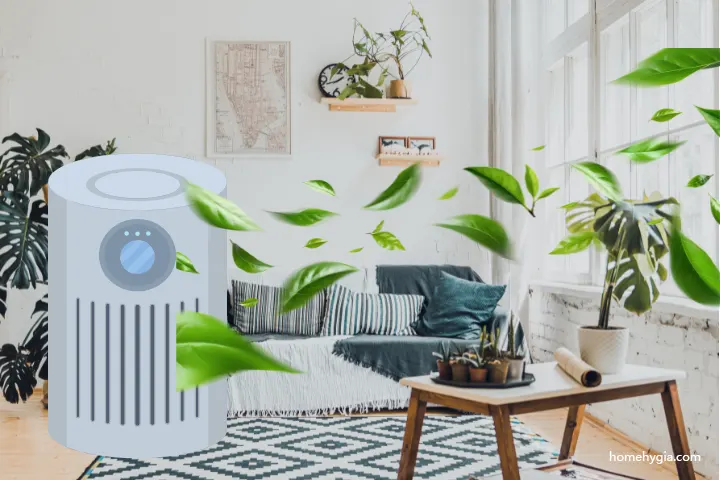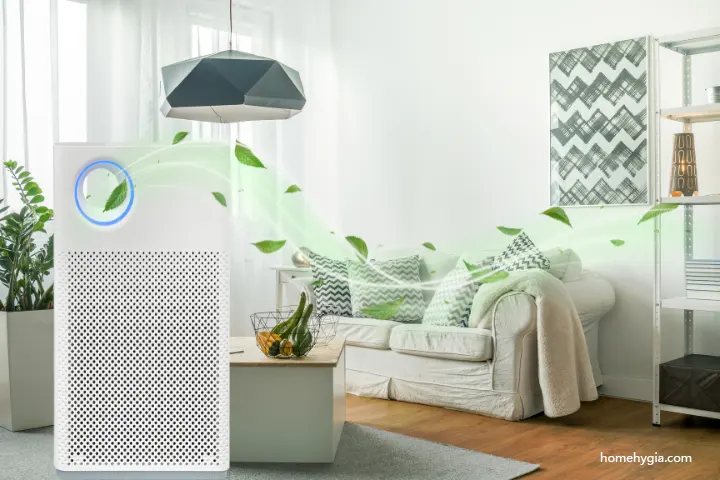What Are PCO Air Purifiers?
Do you ever wonder how clean the air in your home really is? Things like dust, smoke, and chemicals can linger without you noticing. That’s where PCO air purifiers come in.
PCO stands for Photocatalytic Oxidation, a smart technology that doesn’t just trap dirt—it breaks it down. These purifiers are great at removing bad smells, germs, and harmful gases, making the air healthier to breathe.
Let’s dive deeper into how these amazing devices work!
How Do PCO Air Purifiers Work?
PCO air purifiers use a special process to clean the air. Here’s how it works step by step:
- UV Light Turns On: The purifier uses a UV light that shines on a special surface called a photocatalyst.
- Chemical Reaction Happens: The light and the photocatalyst work together to destroy pollutants.
- Clean Air Comes Out: Harmful particles like bacteria, smoke, and chemicals are broken down, leaving fresh, clean air.
Unlike regular air purifiers, PCO models destroy pollutants completely, making them great for cleaning the air in homes, offices, and even hospitals.
Special features
Here’s what sets PCO air purifiers apart:
- Destroys Harmful Chemicals: They don’t just trap pollutants like dust—they get rid of them.
- Removes Odors: Bad smells from pets, cooking, or smoke are gone.
- Quiet Operation: These purifiers work silently, so you can sleep or work without distractions.
- Low Maintenance: You don’t have to replace filters often, saving you time and money.
Do PCO Air Purifiers Produce Ozone?
Some people ask, “Are PCO air purifiers safe?” It’s a good question!
Some PCO purifiers produce a tiny amount of ozone during the cleaning process. While small amounts are usually harmless, too much ozone can cause breathing problems.
How to Stay Safe:
- Look for purifiers labeled ozone-free or low-ozone.
- Use your purifier in a room with good airflow.
When used correctly, PCO air purifiers are safe and effective for cleaning indoor air.
Comparison: PCO vs. Other Air Purifiers
Let’s see how PCO air purifiers compare to other types:
| Feature | PCO Air Purifiers | HEPA Filters |
| How They Work | Breaks down chemicals and odors | Traps dust and allergens |
| Removes Bacteria | Yes | No |
| Noise Level | Very quiet | Moderate |
| Maintenance | Rarely needed | Replace filters often |
Which is better? If you want to remove odors and chemicals, go with PCO. If allergies are your main concern, HEPA filters are a better choice.
What Are the Benefits of PCO Air Purifiers?
PCO air purifiers have several amazing benefits that make them stand out. Let’s explore what makes these purifiers a great choice:
1. Destroys Harmful Chemicals
Unlike traditional air purifiers that trap particles, PCO air purifiers break down pollutants completely. They eliminate harmful gases like VOCs (volatile organic compounds) found in cleaning products, paint, and furniture. This means the air you breathe is not just filtered—it’s truly purified.
2. Removes Odors
Do you have lingering smells from cooking, pets, or smoke? PCO air purifiers are fantastic at getting rid of bad odors. They neutralize the molecules that cause smells, leaving your home fresh and clean.
3. Kills Germs and Bacteria
These purifiers can kill germs, mold, and viruses. If you want to reduce illness or allergies in your home, a PCO purifier is a smart choice. They’re often used in hospitals for this reason!
4. Works Silently
PCO air purifiers don’t use loud fans. Instead, they rely on light and a photocatalyst, making them super quiet. You can use them in bedrooms, nurseries, or offices without any noise distractions.
5. Low Maintenance
Say goodbye to replacing filters every few months! PCO purifiers have parts that last for years. All you need to do is clean them occasionally. This makes them both budget-friendly and eco-friendly.
6. Energy Efficient
Because they don’t rely on big fans, PCO air purifiers use less energy. This means lower electricity bills and a smaller carbon footprint.
7. Perfect for VOCs
If your home has strong chemical smells or VOCs from paint or furniture, PCO purifiers are a great option. They specialize in breaking down these harmful compounds.
What Are the Limitations of PCO Air Purifiers?
No air purifier is perfect, and PCO models are no exception. Here are some drawbacks to keep in mind:
1. Limited Dust Removal
PCO air purifiers are great for gases and odors, but they’re not as effective at capturing larger particles like dust or pollen. If you’re looking for an allergy solution, you might want a HEPA filter instead.
2. Ozone Concerns
Some PCO air purifiers produce small amounts of ozone as a byproduct. Ozone can irritate your lungs, especially if used in a poorly ventilated space. Always choose a low-ozone or ozone-free model for safety.
3. Slower Process
PCO purifiers take longer to clean the air compared to HEPA filters. If you need quick results, this might not be the best option.
4. Initial Cost
These purifiers tend to be more expensive upfront than traditional models. However, their low maintenance and energy savings can make up for it over time.
Comparison: PCO Air Purifiers vs. HEPA Filters
Still unsure if a PCO purifier is right for you? Here’s a quick comparison with HEPA filters:
| Feature | PCO Air Purifiers | HEPA Filters |
| How They Work | Break down pollutants | Trap particles |
| Best For | Odors, chemicals, bacteria | Allergens like dust, pollen |
| Noise Level | Silent | Moderate |
| Maintenance | Clean occasionally | Replace filters regularly |
| Speed | Slower | Faster |
Real-World Applications of PCO Air Purifiers
So, where do PCO air purifiers work best? Here are some ideal situations for these devices:
1. Homes with Strong Odors
Whether it’s from cooking, smoking, or pets, PCO purifiers are great at removing smells that linger in your home.
2. Rooms with Chemicals
If you’ve recently painted a room or installed new furniture, you might notice a chemical smell. PCO purifiers can neutralize these VOCs, making the air safer to breathe.
3. Hospitals and Clinics
PCO air purifiers are often used in healthcare settings because they can kill bacteria, mold, and viruses. They’re perfect for places where clean air is essential.
4. Offices and Workspaces
If you work in an office with poor ventilation or chemical smells, a PCO purifier can improve the air quality and make the space more comfortable.
How to Choose the Right PCO Air Purifier
Buying a PCO air purifier doesn’t have to be complicated. Here’s a step-by-step guide to help you choose the best one for your needs.
1. Check the Room Size
The first thing to consider is how much space you need to cover.
- For small rooms like bedrooms, choose a purifier with a coverage area of 100–200 square feet.
- For larger spaces like living rooms, look for purifiers that handle 300 square feet or more.
Pro Tip: Always pick a purifier with slightly more coverage than your room size for the best results.
2. Look for Ozone-Free Models
Some PCO air purifiers produce small amounts of ozone as a byproduct. To keep your air safe:
- Choose a purifier labeled as ozone-free or low-ozone.
- Look for certifications like the California Air Resources Board (CARB), which ensures safety.
3. Noise Levels
If you plan to use the purifier in a bedroom or office, noise levels matter.
- Most PCO air purifiers are quiet, but check user reviews to confirm this before buying.
4. Energy Efficiency
To keep electricity costs low, look for a model with an Energy Star rating. These purifiers use less power, saving you money in the long run.
5. Maintenance Requirements
PCO air purifiers don’t need filter replacements, but you’ll still need to clean the unit. Before buying, check:
- How often you’ll need to clean the purifier.
- Whether the photocatalytic parts are easy to access.

Top 3 PCO Air Purifiers
| Model | Room Size Coverage | Key Features | Noise Level | Ozone-Free? | Price Range |
| Puraclenz Photon P3000X | Up to 3,000 sq. ft. | Patented PCO tech, eliminates mold, bacteria, odors | Low (whisper-quiet) | Yes | $1,000 |
| Airpura P600 | Up to 2,000 sq. ft. | Combines PCO + HEPA, removes particles and VOCs | Low (quiet) | Yes | $1,000–$1,200 |
| Envion Ionic Pro CA200 | Up to 200 sq. ft. | Compact, ionization + PCO, budget-friendly | Very low | Yes | $110 |
Which Model Should You Choose?
- For Large Spaces: Choose the Puraclenz Photon P3000X for its high coverage and advanced PCO technology.
- For Medium Rooms: The Airpura P600 offers a blend of PCO and HEPA filtration, making it perfect for medium to large areas.
- For Small Rooms: The Envion Ionic Pro CA200 is compact, quiet, and affordable, ideal for bedrooms or small offices.
Maintenance Tips
To keep your PCO air purifier working its best, follow these simple maintenance steps:
1. Clean the Photocatalytic Filter
Most models have a photocatalytic surface that traps pollutants. Clean this surface every few months to keep the purifier running efficiently.
2. Check for Dust Buildup
Dust can block airflow and reduce performance. Wipe down the exterior and vents regularly with a soft cloth.
3. Follow Manufacturer Guidelines
Every purifier is different, so always refer to the manual for specific cleaning instructions. This ensures you don’t damage any parts.
Alternatives to PCO Air Purifiers
If a PCO air purifier doesn’t seem like the right fit, here are some other options to consider:
1. HEPA Filters
- Best for: Removing dust, pollen, and allergens.
- Why Choose It: HEPA filters trap 99.97% of small particles, making them perfect for allergy sufferers.
2. Activated Carbon Filters
- Best for: Odor removal and chemical filtration.
- Why Choose It: These filters absorb harmful gases and VOCs.
3. UV-C Light Purifiers
- Best for: Killing bacteria and viruses.
- Why Choose It: They sterilize the air using ultraviolet light without producing ozone.
FAQs
1. How do I know if a PCO air purifier is right for me?
If your main concern is odors, chemicals, or germs, a PCO air purifier is a great choice.
2. Are PCO air purifiers safe?
Yes, especially if you choose a model labeled as ozone-free or low-ozone.
3. How often should I clean my PCO purifier?
Most models need cleaning every 2–3 months. Always follow the manufacturer’s instructions.
4. Can a PCO purifier remove dust and allergens?
They’re not the best for dust or pollen. A HEPA filter works better for those issues.
Conclusion
Choosing the right PCO air purifier is simple when you know what to look for. Focus on room size, ozone safety, noise levels, and maintenance needs to find a model that fits your lifestyle.
With the right care, a PCO air purifier can improve your air quality by removing harmful chemicals, germs, and odors. If you’re unsure, consider one of the recommended models or explore alternatives like HEPA or activated carbon filters.
Breathe easy knowing you’ve made a smart choice for your home’s air quality!
